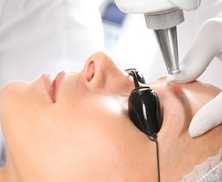Stretch marks occur when the dermal layer is stretched to breaking point. The dermal layer is sandwiched between the epidermis and the hypodermis and usually provides support and strength to the more fragile epidermis.
If body volume increases too rapidly and put under too much strain, the dermis can tear, revealing the hypodermis beneath. This layer of skin contains, amongst other things, connective tissues and lobules of fat, as well as blood vessels leading up into the dermis.
When this layer of skin is exposed through the torn dermis, it can be seen through the surface of the skin, which explains the red or purple colour associated with recent stretch marks. The tear can also mean that stretch marks feel strange, and less dense than the surrounding skin, as the supportive layer, beneath has been ruptured.
As with any tissue damage, the body attempts to repair the wound by creating scar tissue. Scar tissue is harder and more fibrous than normal healthy skin tissue, which is why the scars can feel rippled. As scar tissue repairs the tear in the dermis, the colour of the stretch mark fades from red to silver.
They will never fade completely, however, and can cause embarrassment. Luckily, stretch mark removal can help to reduce their appearance even further.































